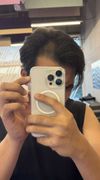
community Progress Update After 1 Year on Minoxidil 5% and 6 Months on Oral Finasteride 1mg – Is This Progress Slow or Normal?
The user has been using Minoxidil 5% for a year and oral Finasteride 1mg for six months, along with a derma stamp, castor oil, and biotin shampoo, to address hair loss. They are experiencing uneven hair growth but are advised to continue their current routine for at least a year before considering a hair transplant.